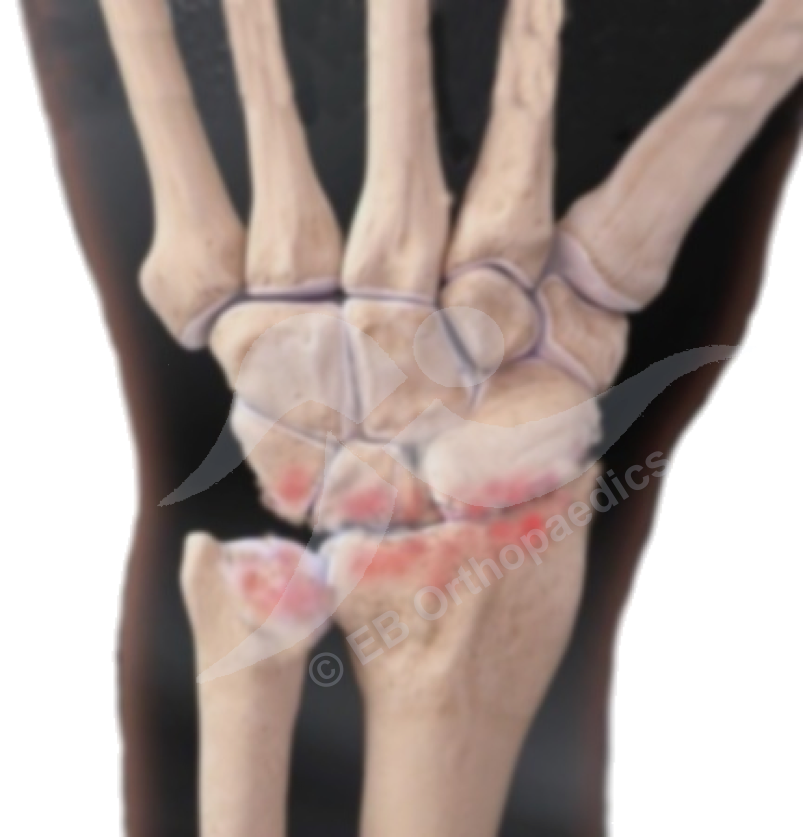Wrist arthritis

Wrist arthritis is arthritis affecting the main wrist (radiocarpal) joint, or one or more of the smaller (inter-carpal) joints within the wrist.
While there are many types of arthritis, the commonest are osteoarthritis (‘wear and tear’) that becomes more common with increasing age, and post-traumatic arthritis (arthritis that follows a previous injury to the wrist). Other types of arthritis may occur as part of a body-wide condition such as rheumatoid arthritis.
Arthritis is a process whereby the cartilage carpet in the joint is lost, resulting in bone rubbing directly on bone. This stimulates the body to produce more bone (osteophytes) which can stiffen the joint or cause catching and locking of the joint if small parts of the bone break off and float around the joint.
The main symptoms are pain and stiffness of the wrist. The pain tends to be a constant ache and may be worse in cold weather.
While non-surgical treatments do not affect the underling arthritis, they can control the symptoms from it. In the early stages, simply adjusting what you do and how you do it may be sufficient. Regular painkillers may be enough to keep the pain under control and enable regular activities to be performed. A splint for the wrist can be particularly good at controlling the pain.
You may find a steroid injection helpful. This may be given if there is uncertainty as to how much of your symptoms are coming from a particular joint and how much from elsewhere. Injections can provide relief lasting months or longer but the duration of pain relief tends to vary and is often unpredictable.
The main surgical treatments for wrist arthritis are to fuse (permanently join together) the affected joint, remove the parts of the wrist which are contributing to the pain, or to replace the main wrist joint. Which of these is most appropriate for you can be discussed with your surgeon.
In cases where the above options are not appropriate, an operation to remove some of the nerves which carry pain signals from the wrist may be performed.
After surgery you will be advised of the particular exercises that are right for you. Such advice will vary depending on the surgery you have had.
The results of surgery will depend on the specific surgery you have had. Some procedures aim to eliminate pain at the expense of movement, while others aim to reduce the pain but allow some movement to be retained. What to expect will be discussed with you prior to any surgery.